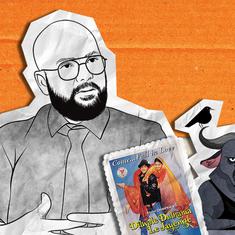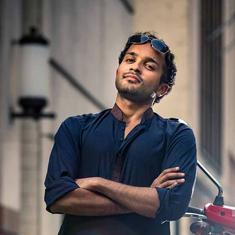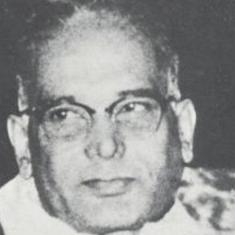Finally, a female inter-galactic superhero from Marvel. Shouldn’t that be exciting enough?
Pity that Captain Marvel, directed by indie film-making duo Anna Boden and Ryan Fleck (Mississippi Grind, 2015; It’s Kind of a Funny Story, 2010; Half Nelson, 2006), is so short on thrills and pluck. After Wonder Woman (2017), an extremely satisfying origin tale and superhero adventure, the benchmark for a female superhero is high. Marvel itself has had two crackerjack releases in 2018: Avengers: Infintiy War and Black Panther .
Captain Marvel, though, falters on both character development as well as visual dazzle.
Brie Larson is Vers, who lives alongside a humanoid species called the Kree, and fights as a member of their elite military Starforce under Yon-Rogg (Jude Law). Their mission is to eliminate a race of shapeshifting aliens known as the Skrulls, who can imitate any life form they see.
Early on in the mission, Yon-Rogg tells Vers that her emotions are her enemy and that she should control them in order to fight the good fight against the Skrulls. Vers goes through the first hour of the movie in an amnesiac drill, with flashes of memories from her past, and a twinkle on her face. A blue current courses through Vers’s body, which potentiates in her hands. Use it sparingly, mind over heart, the boss with lame dialogue keeps reminding her.

During her first mission designated by Kree scientist Supreme Intelligence (Annette Bening), Vers meets Nick Fury (a disturbingly un-aged Samuel L Jackson), a S.H.I.E.L.D agent who becomes her ally. So does a cat who pairs up with Fury (this dorky pair is responsible for all the humour the script can muster).
On Earth, Vers remembers she was Carol Danvers, a fearless US Air Force pilot who crashed into the ocean with Supreme Intelligence and turned into a Kree native with superpowers.
The premise, that Carol has to fight her battle by turning her emotional vulnerability into her strength, is an old one, is full of promise. But the movie spends so much time in exposition that the premise remains half-baked. The thrilling fight that involves CGI acrobatics in outer space can’t redeem the movie from its bland fury.
Boden and Fleck aren’t masters of technical scale, going by their oeuvre. The characters and Carol’s emotional journey should have been the soul of Captain Marvel, but the filmmakers’ focus is neither on character development nor on the quality of special effects.
Even in smaller roles, Carol’s allies are pluckier than her. As the Skrulls chief Talos, Ben Mendelsohn has a zany emotional centre. Carol’s best friend Maria (Lashana Lynch), also a fighter pilot and mother of a spunky seven-year-old girl, has a convincing emotional graph.
A montage in which we see Carol overcoming taunts by men on her way to becoming a pilot is the only detail that establishes she has a personal stake in using her superpowers. Larson plays the role with relish, but when she remembers her past, the little edge her lead character had wears off, and Larson struggles to rise above the humourless self-absorption of Carol.
The only promise that Captain Marvel delivers is that there is more, the sequel has Larson, and it has the cat. The first couple of missions which Vers leads are so disappointing they look more like space scuffles than inter-galactic battles and are vaguely reminiscent of the diminutive action in films such as Honey I Shrunk the Kids.
One of the best things in Captain Marvel is the cute 1990s. DVDs, CD roms, the leisurely internet speed and a soundtrack that celebrates the best of the decade’s girl songs—the best of Garbage, No Doubt, Hole. When Carol steals a motorcycle from a guy who teases her on her superhero costume and zooms off to Garbage’s Only Happy When It Rains, the scene feels charged with action.











